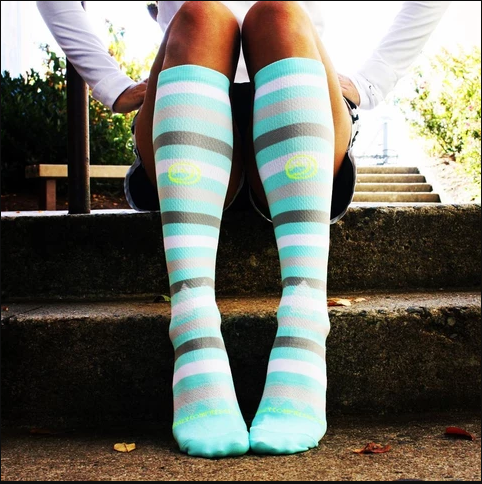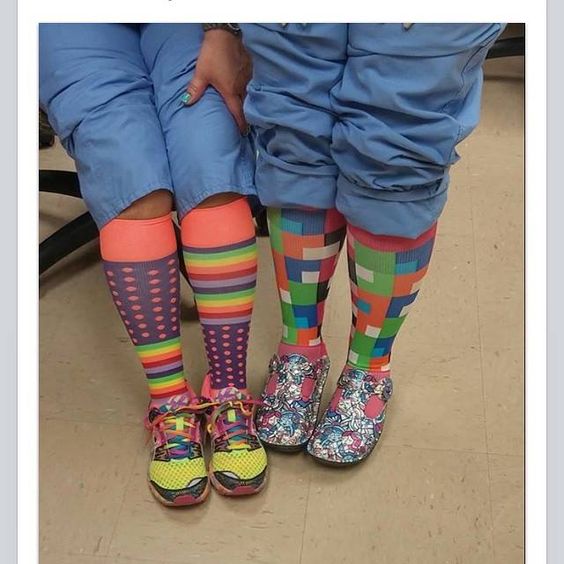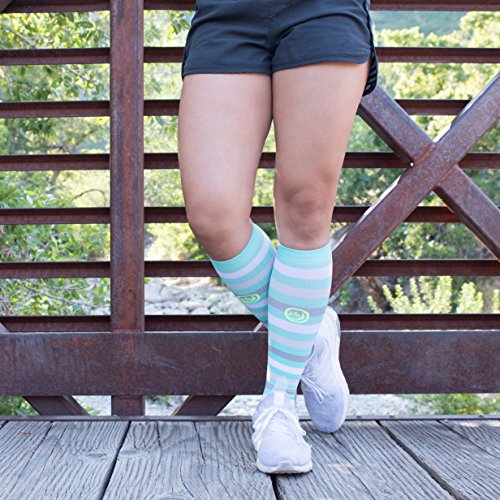
Being a nurse is not a profession for the faint of heart. It requires a lot of endurance, and you need to deal with a lot of stress. Nurses spend most of their time on their feet, and standing and walking for too long without any rest can result in numerous health issues, including knee pain, joint damage, and many more.
In this article, we will talk about how compression socks are beneficial to anyone whose job requires them to stand on their feet all day–especially our hard-working nurses.
What Are Compression Socks?
Compression socks are snug-fitting, stretchy socks that gently squeeze your leg. The pressure is slightly tighter around the ankle and gets looser as they move up your leg. Compression socks are easily available at medical supply companies, online, and in many drug stores. Their price ranges from around $10 to as much as $100 per pair, depending on the kind of sock you use.
Compression socks are used to regulate the pressure in your legs, which can have many health benefits over time, including prevention and minimization of varicose veins.
Compression Sock Uses
Compression socks squeeze the leg lightly. They prevent blood from pooling in the legs and feet. It also helps minimize the swelling of legs and feet. Nurses are often on their feet all day. As a result, the fluid in the muscle tissue gets built up, which can be very painful. Compression socks tighten the area around the lower leg and the feet, which helps move the blood flow upward. Swelling is prevented or decreased, which allows nurses to perform their jobs more efficiently.

A proper and fit compression sock helps nurses’ feet by minimizing the development of frustrating sores, bunions, and calluses. You have to take good care of your feet to support your body. A healthy foot and leg can fend off serious issues, like blood clotting and chronic back pain.
When you wear compression socks, you will often notice that you experience less pain in your legs and feet. Wearing compression socks can enhance your blood circulation. Thus, it becomes easier for your circulatory system to deliver oxygen to your muscles. Boosting your circulation may also help remove lactic acid from your muscles. For many people, that means that you can keep your legs and feet healthy in spite of working longer hours than expected.

Their most important benefit is that compression socks help improve blood flow, which lowers your risk for blood clotting. Many people realize that blood flow in our legs can be compromised when you stand for long periods of time.
Here is an insight into the benefits of having the right compression socks while you’re on the job.
Compression Socks Prevent Blood Clotting
Apart from nurses, athletes also like knee-high compression socks. It is because compression socks help reduce swelling. They also curtail the problems caused by varicose veins, deep vein thrombosis, and skin ulcers. Compression socks can prevent varicose veins, which are caused by weakened valves and veins that compromise blood flow all day.
Compression Socks Improve Circulation
Good blood flow is really important, as it prevents your leg from feeling pain, numbness, cramps, and other related issues. Preventing slowed circulation on the job can help keep you comfortable while you work.
Megan Berg, ambassador of Run Forever Sports, claims that she uses compression socks not only while working as a nurse but also on a race day:
“Many nurses wear compression socks because they can help reduce leg soreness that happens while being on your feet for several hours. The nurses that wear compression socks complain less about foot and leg pain after work. Varicose veins are very common with nurses and the socks help with reducing spider and varicose veins. They also reduce leg swelling. I love the Run Forever Sports Compression Socks because they don’t slide down my legs.”
Nurses often experience the heavy feeling of leg fatigue. Compression socks are mainly created to improve the circulation of blood, which helps eliminate or decrease these types of problems.
Many nurses wear compression socks to relax and relieve their feet and legs. They even use compression socks while off of their normal working hours. Similarly like runners, nurses’ muscles need recovery and relaxation while off duty.
Use Compression Socks if You Want to…
- Boost circulation in your legs
- Support veins
- Prevent blood from pooling in your leg veins
- Reducing leg swelling
- Reduce orthostatic hypotension
- Help prevent venous ulcers
- Help prevent deep vein thrombosis in your legs
- Decrease the pain caused by varicose veins
- Reverse venous hypertension
- Improve lymphatic drainage
Primary Types of Compression Stockings
The three primary types of compression stockings are:
- Graduated compression stockings
- Anti-embolism stockings
- Nonmedical support hosiery
Popular Articles on ComproGear
Best Compression Socks for Elderly Old People Socks
Graduated Compression Stockings
The level of compression in graduated compression stockings is strongest at the ankle and gradually decreases towards the top. They’re designed specifically for mobility and flexibility and to meet certain length and strength medical specifications.
The stockings end just below the knee, which helps limit peripheral edema or lower leg swelling due to fluid buildup.
These stockings extend to the thigh or waist help reduce the pooling of blood in the legs and help prevent orthostatic hypotension.
Anti-embolism Stockings
Anti-embolism stockings reduce the possibility of deep vein thrombosis. Like graduated stockings, they provide gradient compression. The level of compression differs slightly. Anti-embolism stockings are designed for those whose movements are limited.
Nonmedical Support Hosiery
Nonmedical support hosiery doesn’t typically require a prescription. They include elastic support hose and flight socks sold as a potential relief for tired, aching legs. These stockings deliver uniform compression that exerts less pressure than prescription compression stockings. Nonmedical compression stockings are available at most pharmacies or online shopping sites.
Other Uses for Compression Socks
- People going through circulation problems, like DVT, varicose veins, or diabetes
- Pregnant women
- Those who can’t leave their bed or have a hard time moving their legs
- Athletes
- People who spend long stretches of time on airplanes, like pilots and cabin crews
- People who’ve just gotten surgery
